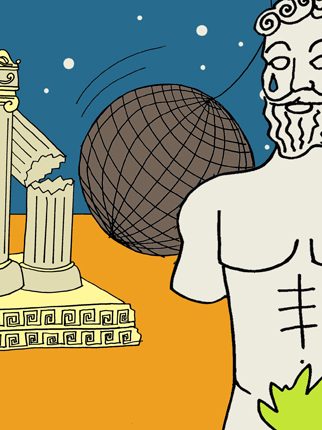The Secret History of Kandi
The multicolored accessories known as kandi are staples of any self-respecting electronic dance music event these days, serving as both a fashion statement and a symbol of PLUR. But how did kandi come to be? Many assume the plastic beads were popularized during the first wave of warehouse raves in the ‘90s, but recent research by acclaimed historians at Pasadena City College indicate the jewelry’s roots run much deeper.
Here, we provide the complete and perhaps partially embellished history of rave’s favorite beaded accessory.
Caveman Era
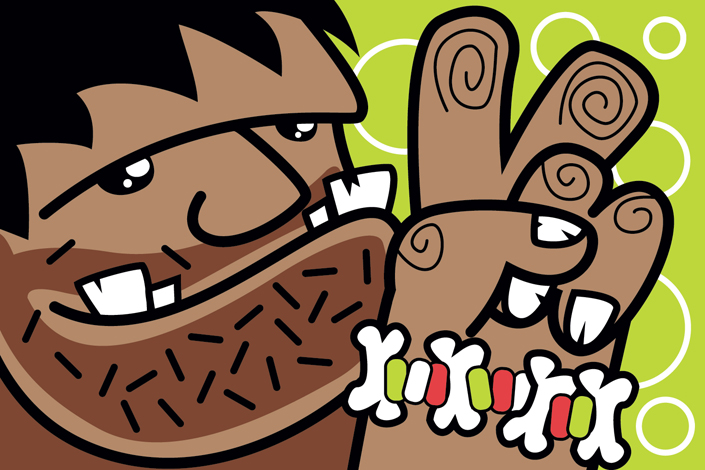
Paleolithic cave paintings recently unearthed in modern day Romania depict Neanderthal hunters wearing kandi-style necklaces to commemorate great kills. According to forensic analysis, a hunter would memorialize his slaughtered mastodon by taking a piece of the dead animal’s dung, which his gatherer wife would dry out and string onto a piece of primitive twine. Unfortunately, each poop bit weighed nearly 100 pounds, making mobility difficult and ultimately causing the civilization to starve.
Ice Age

Little is known about human civilizations preceding the most recent ice age some 15,000 years ago, which wiped out large swaths of Earth’s mammals. But in 1991, an archeological dig uncovered a long-frozen Neanderthal in the Austrian Alps. He had clusters of sparkling ice on his wrists and his teeth and looked strikingly similar to Riff Raff.
Mesopotamian Era

Hundreds of years before Christ, in what is now the Middle East, Mesopotamian societies made great advances in math, science and medicine. In fact, it was all pretty nerdy. Fortunately for local cool kids, the beads from their abacuses also made for some pretty sweet jewelry. Teenagers would dye them and, since the beads already had holes, make them into anklets. This early kandi made a cool percussive sound when the kids danced to the music of early tech house predecessor Oud, and it had the added benefit of scaring off scorpions.
Ancient Rome
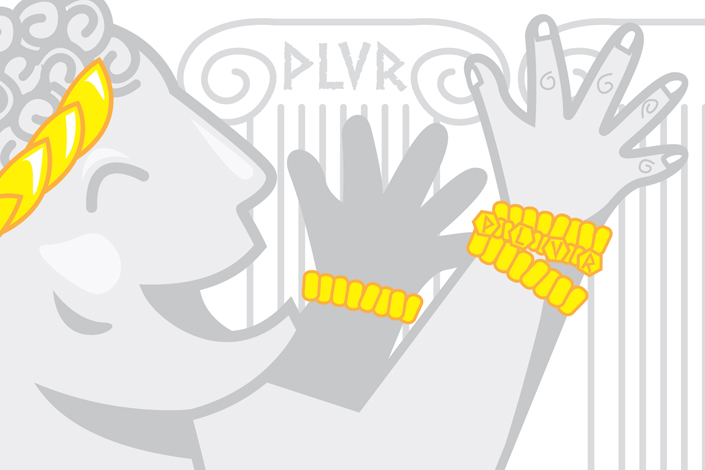
Advancing the arts of philosophy and debate, ancient Roman intellectuals eventually got tired of writing on stone tablets, electing instead to carve letters onto small bits of clay, which they made into bracelets and gave to epicureans they thought were cute. This style became a sort of language in and of itself—a precursor to texting, if you will—though it was confusing, since they insisted on spelling the letter “u” as “v” (hence an early party ethos called “PLVR”). They were also the first civilization to perform dubstep, although their idea of dropping the bass involved someone standing on top of the Coliseum and literally hurling large fish on the unsuspecting revelers below.
French Revolution
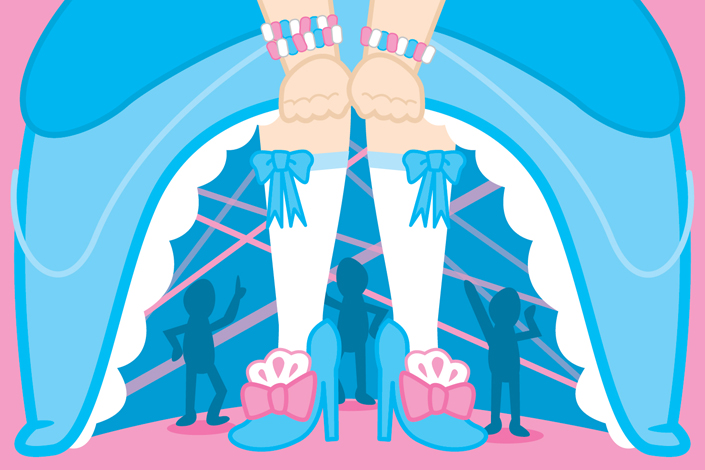
Eighteenth-century French queen Marie Antoinette hosted Europe’s first underground raves. Soundtracked by an early form of French house played on a primitive version of the Victrola, they were held entirely under Antoinette’s giant, poofy dresses. Dozens of the famously short Frenchmen and women partied down beneath the soundproofed layers of her fabric while she chatted with the royal court, no one the wiser. To this day, these parties remain the most exclusive events in the history of French electronic music, though historians are still divided on whether or not those “fabric” parties inspired a future UK movement. Attendees draped themselves in a local variant of kandi, which consisted mainly of peppermints and butterscotch and was hella sticky. Interesting side note: The Pasadena historians determined that Antoinette’s famous line “Let them eat cake” was misquoted. It turns out that—centuries before Steve Aoki—when asked about the suffering French masses, she simply suggested, “Let them get caked.”
Industrial Revolution

Everyone knows the industrial revolution brought about major manufacturing improvements and substantially raised the Western world’s standard of living. But did you know it also mass-produced kandi for the first time? In the early 19th century, a small Southern England town called Oakenfield made and distributed tons of the stuff, owing to their innovative methods in smelting and transport. The townsfolk were also great consumers of kandi, particularly at a spot called Factory. This was not the famed dance club but a literal factory, where soot-faced grade-schoolers sweated 19 hours a day, six days a week, making uncomfortable ladies’ corsets. The laborers were, however, permitted five minutes of recreation time per day, which they spent showing off their kandi and dancing to industrial. Not industrial music, but simply the rhythmic, churning sounds of assembly lines and giant metal plates crashing together in bursts of steam. Unfortunately, the workers died prematurely of black lung, as did everyone else in Oakenfield, which you nowadays can’t even find on a map.
1980s New York
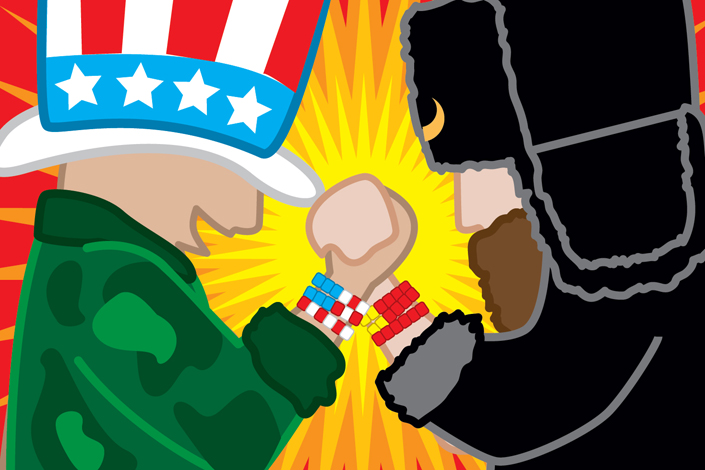
While club kids like James St. James would begin taking over the New York scene in the late ‘80s, at the beginning of that decade a group operating out of Manhattan built a vast kandi empire. With the Soviet Union still a global superpower and the famous Leningrad acid house scene gaining steam, US president Ronald Reagan enlisted a group of young patriots in the borough’s bead district to stockpile the greatest supply of kandi the world had ever seen. The aim was to coax the USSR into an “arms” race to see who could wear the most plastic jewelry on their arms. The plan worked. Russian clubbers went bankrupt attempting to blanket themselves in kandi, and the Berlin Wall fell shortly thereafter. Unfortunately, beading culture briefly faded from prominence a decade later under a treaty signed by President Clinton, in which both sides agreed to disarm.
EDC Las Vegas 2014
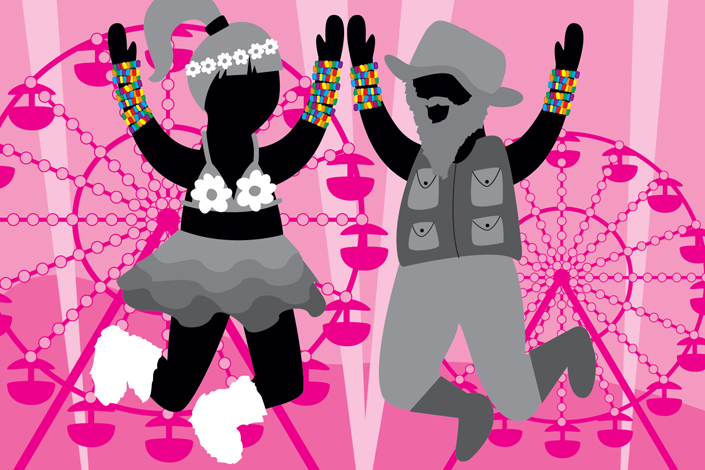
In the first part of this decade, kandi faced widespread persecution, banned at many electronic dance music events around the country. To some authority figures, kandi symbolized a wild, irresponsible lifestyle—either that or a wild, irresponsible fashion statement. But amid the crackdowns, Insomniac founder Pasquale Rotella stood strong, announcing that—at his company’s 2014 marquee event, EDC Las Vegas—he would personally make kandi wristbands for the first 85,000 attendees. This proved difficult, however, as it quickly threatened America’s supply of fishing line, resulting in mass protests at Dick’s Sporting Goods shops around the country. The tension was diffused, however, when Dillon Francis hacked into the chain’s mainframe audio system and blasted his new moombahton track, “Seriously, It’s Cool” (Pescatarian Remix), over the stores’ PAs. Rotella promptly sent chartered buses to the Dick’s locations, where the previously angry fisherman, now totally chill, boarded and headed out to Sin City for the party of their lives. Side note: The vendor selling camouflage-beaded “Get ‘er Done” pacifiers made a killing that weekend.




